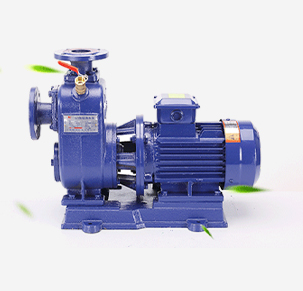English
- Afrikaans
- Albanian
- Amharic
- Arabic
- Armenian
- Azerbaijani
- Basque
- Belarusian
- Bengali
- Bosnian
- Bulgarian
- Catalan
- Cebuano
- Corsican
- Croatian
- Czech
- Danish
- Dutch
- English
- Esperanto
- Estonian
- Finnish
- French
- Frisian
- Galician
- Georgian
- German
- Greek
- Gujarati
- Haitian Creole
- hausa
- hawaiian
- Hebrew
- Hindi
- Miao
- Hungarian
- Icelandic
- igbo
- Indonesian
- irish
- Italian
- Japanese
- Javanese
- Kannada
- kazakh
- Khmer
- Rwandese
- Korean
- Kurdish
- Kyrgyz
- Lao
- Latin
- Latvian
- Lithuanian
- Luxembourgish
- Macedonian
- Malgashi
- Malay
- Malayalam
- Maltese
- Maori
- Marathi
- Mongolian
- Myanmar
- Nepali
- Norwegian
- Norwegian
- Occitan
- Pashto
- Persian
- Polish
- Portuguese
- Punjabi
- Romanian
- Russian
- Samoan
- Scottish Gaelic
- Serbian
- Sesotho
- Shona
- Sindhi
- Sinhala
- Slovak
- Slovenian
- Somali
- Spanish
- Sundanese
- Swahili
- Swedish
- Tagalog
- Tajik
- Tamil
- Tatar
- Telugu
- Thai
- Turkish
- Turkmen
- Ukrainian
- Urdu
- Uighur
- Uzbek
- Vietnamese
- Welsh
- Bantu
- Yiddish
- Yoruba
- Zulu
Telephone: +86 13120555503
Email: frank@cypump.com
Aug . 05, 2024 15:12 Back to list
High Efficiency Custom Slurry Pump Design Solutions for Industrial Applications and Engineering Needs
High-Quality OEM Slurry Pump Engineering Key Considerations and Innovations
In the realm of industrial processes, the transportation of abrasive fluids via slurry pumps is an essential operation. These pumps are specifically designed to handle a mixture of solids and liquids, making them vital in various sectors such as mining, wastewater treatment, and chemical processing. High-quality Original Equipment Manufacturer (OEM) slurry pump engineering has emerged as a focal point of innovation and efficiency, catering to the increasing demands of modern industries.
Understanding Slurry Pumps
Slurry pumps are distinct from standard pumps because they deal with a heterogeneous mixture. This mixture typically contains solid particles suspended in a liquid, and the characteristics of these solids can vary significantly, impacting the pump's performance. As such, slurry pump engineering focuses not only on the efficiency of fluid movement but also on the durability and reliability of the pumps to withstand the challenging conditions of abrasive wear and corrosive environments.
Key Engineering Aspects
1. Material Selection One of the most critical aspects of designing high-quality OEM slurry pumps is the selection of materials. Pumps must be constructed with wear-resistant materials such as high-chrome iron or rubber linings. These materials enhance longevity and reduce maintenance costs, making them indispensable for industries where downtime translates into significant financial losses.
2. Hydraulic Design The hydraulic design of a slurry pump is crucial for optimizing performance. This encompasses factors such as the pump's impeller design, volute, and pump curves. A well-engineered impeller can reduce turbulence and wear while maximizing the efficiency of solid-liquid transport. OEM engineers must leverage advanced computational fluid dynamics (CFD) simulations to refine designs before production.
high quality oem slurry pump engineering

3. Customization High-quality OEM slurry pumps often come with customization options tailored to specific applications. This can include variations in size, capacity, and operational parameters. Customization ensures that the pump operates efficiently within the varying conditions of different industrial environments.
4. Sealing and Bearing Technology Advanced sealing technologies are essential to prevent leakage, which can lead to equipment failure and environmental hazards. Moreover, the bearings used in slurry pumps must be robust enough to handle high loads and abrasive conditions. Innovations in bearing design, such as self-lubricating or ceramic-coated bearings, contribute to the reliability and performance of these pumps.
Innovations in Slurry Pump Engineering
The slurry pump industry is experiencing rapid technological advancements. Recent innovations include the integration of smart technology and IoT (Internet of Things) capabilities into pump design. These technologies enable real-time monitoring of pump performance and predictive maintenance, allowing operators to detect and address issues before they escalate into more significant problems.
Furthermore, the adoption of sustainable engineering practices has gained traction. Manufacturers are focusing on energy-efficient designs that not only reduce operational costs but also minimize the environmental impact. For instance, energy-efficient motors and variable frequency drives (VFDs) are increasingly being used to optimize energy consumption and extend the operational life of pumps.
Conclusion
The field of OEM slurry pump engineering is marked by a relentless pursuit of quality, efficiency, and innovation. As industries continue to evolve, with increasing demands for sustainability and performance, the importance of high-quality slurry pumps cannot be overstated. By focusing on advanced materials, hydraulic design, customization, and the integration of cutting-edge technologies, manufacturers can ensure their products meet the rigorous standards of modern industrial applications. High-quality slurry pumps are not just a necessity; they are a cornerstone of operational excellence in many sectors.
-
ISG Series Vertical Pipeline Pump - Chi Yuan Pumps Co., LTD.|High Efficiency, Energy Conservation, Low Noise
NewsJul.29,2025
-
ISG Series Vertical Pipeline Pump-Chi Yuan Pumps Co., LTD.|High Efficiency&Energy-Saving
NewsJul.29,2025
-
ISG Series Vertical Pipeline Pump - Chi Yuan Pumps Co., LTD. | High Efficiency, Energy-Saving
NewsJul.29,2025
-
ISG Series Pipeline Pump - Chi Yuan Pumps | High Efficiency, Low Noise
NewsJul.29,2025
-
High-Efficiency Vertical Slurry Pumps for Mining & Industry Solutions
NewsJul.29,2025
-
High-Efficiency Pipeline Pump Solutions for Every Pipeline Pump Station
NewsJul.29,2025










